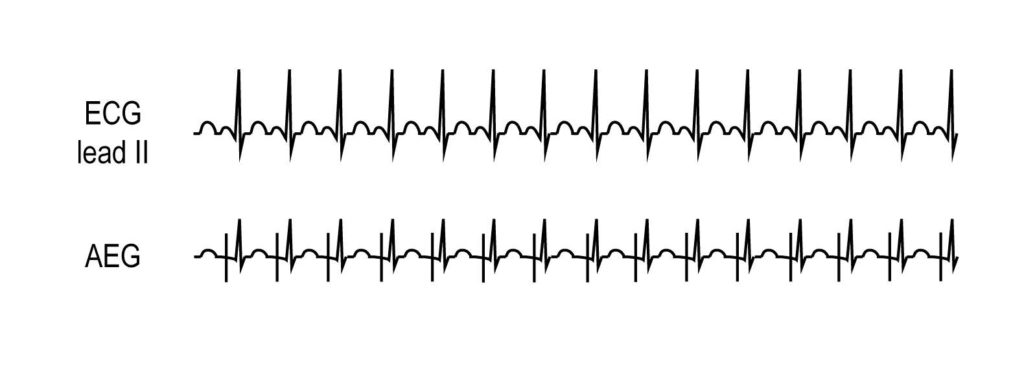

Background: Sinus tachycardia is common after heart surgery and may be secondary to varied causes such as pain, fever, poor cardiac output, hypovolemia, medications and more. The atrial rate during sinus rhythm may be responsive to treatment of these underlying concerns, which can assist in the diagnosis of the tachycardia.
AEG: Sinus rhythm generally has atrial rates less than 200bpm per minute, though, especially in children, rates can infrequently be higher. Typically, the AV duration is shorter than the VA duration. Sinus rhythm has a normal P wave axis, though this can be difficult to distinguish on the surface leads. It most commonly demonstrates a 1:1 atrial to ventricular ratio unless there is AV nodal disease. Above is an idealized example, with easily identifible P waves, and the patient examples. The final example shows a wide complex QRS, which is similar to the patients baseline QRS. The atrial signals in that AEG are seen as the sharp deflection near the end of the T wave.
Adenosine: Sinus rhythm will only transiently suppress after adenosine
Atrial Overdrive Pacing: Sinus rhythm will be suppressed when pacing at a rate higher than the rate of the sinus tachycardia, but the rhythm will resume once pacing has stopped.